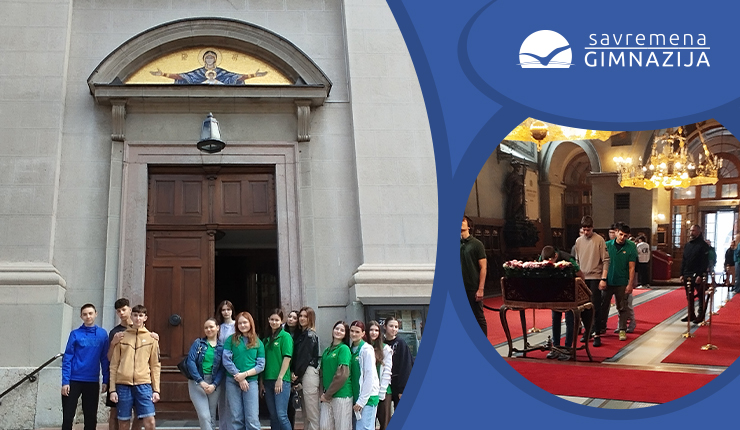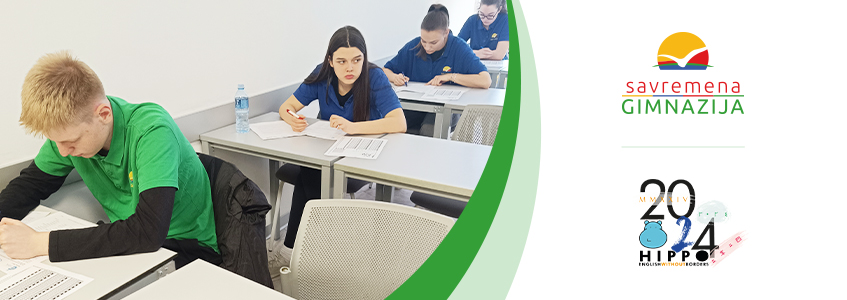
In addition to learning about the Roman history of Belgrade, the second grade students from Savremena Gimnazija had the opportunity to explore many other landmarks that adorn the capital city of Serbia with their Latin language teacher, Natalija Stanković. During the walk, students learned that the statue of Prince Mihailo on horseback, located in the main Belgrade square, points towards the unreleased lands, symbolically facing the then-enemy.
Statue of Branislav Nušić and Other City Monuments
Not far from the Republic Square, students acquainted themselves with the statue of Branislav Nušić, a famous Serbian writer and playwright. They learned that in front of the National Assembly building stands the work of the renowned sculptor Toma Rosandić, depicting the richness and diversity of Serbian cultural heritage.
Visit to the Serbian Academy of Sciences and Arts
The students also paid significant attention to the visit to the Serbian Academy of Sciences and Arts, where they learned more about its establishment and significance in the development of scientific and artistic thought in Serbia. Additionally, they visited the Cathedral Church where they participated in marking the anniversary of Dositej Obradović's death, and they became familiar with the differences between the Orthodox and Catholic churches, as well as whose relics can be found within this church.
History of the Belgrade Library and Mihajlo Petrović Alas
A part of the walk was dedicated to educating about the history of the Belgrade Library, which was originally housed in a building that was demolished during the bombing of Belgrade, as well as getting to know the life and work of Mihajlo Petrović Alas, a famous Serbian mathematician.
This educational school trip was an opportunity for students not only to hear of, but also to see, numerous cultural and historical landmarks of Belgrade, which they had previously passed by without knowing their true significance. Ambient education has proven to be an extremely useful way to practically apply and experience theoretical knowledge, enriching the general culture and understanding of students about their own country and heritage.


















